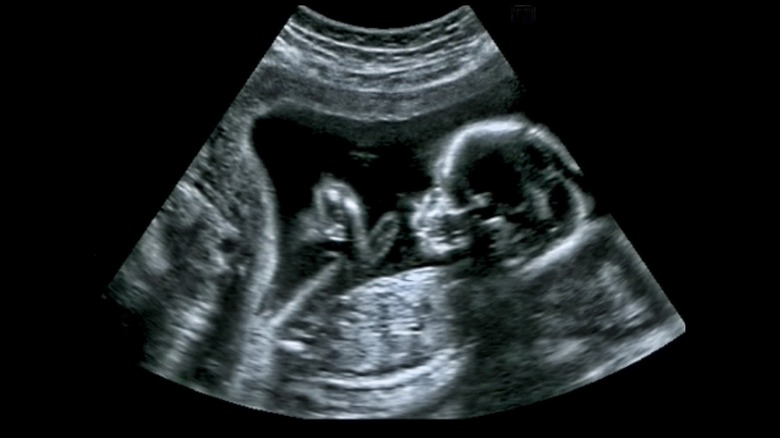How Rare Is It To Be Born With Organs Outside The Body?
According to the U.S. Centers for Disease Control and Prevention (CDC), omphalocele is a condition in which a baby's abdominal organs are pushed outside of the body through the base of the umbilical cord and out through the belly button. Surrounding the organs is a thin membrane sac, and while this sac is often still intact after birth, it is possible for it to break during pregnancy or following delivery (via Children's Hospital Wisconsin).
Cases in which a baby's organs are born outside of the body can fall into two categories: a small omphalocele or a large omphalocele, according to Children's Hospital Wisconsin. Small omphalocele cases pertain exclusively to the intestines, in which only a small section of the organ is located outside of the body. Large cases, or sometimes referred to as "giant" omphalocele cases, pertain to more than one organ located outside of the body, such as the intestines, spleen, and liver.
The exact cause of the condition is unknown, although scientists believe genetics and environmental factors may play a part, according to the CDC.
Omphalocele birth statistics
According to the CDC, as the intestines grow during fetal development, it is normal for them to become exposed outside the body. However, by the eleventh week of pregnancy, the intestines ordinarily regress back into the belly. In cases of small omphaloceles, however, this regression does not occur.
Additionally, an estimated 50% of babies born with an omphalocele are born with additional birth defects including those of the urinary tract or skeletal system, and most commonly, the heart (via Children's Hospital Wisconsin).
According to Children's Hospital Wisconsin, 1 in every 5,000 to 6,000 babies is born with a small omphalocele, while large omphaloceles account for every 1 out of 10,000 live births. As reported by Children's Hospital of Philadelphia, their Center for Fetal Diagnosis and Treatment (CFDT) sees about 30 to 50 omphalocele cases annually, often diagnosed by their team around 20 weeks of pregnancy via prenatal ultrasound.
Omphalocele treatment and recovery time
A small omphalocele is usually surgically treated following birth, while treatment for a large omphalocele may need to be completed in phases over time (via CDC). In some cases, an omphalocele may be successfully treated with only one surgical procedure known as the "primary closure" (via Children's Hospital Wisconsin). If the organs are unable to be fit back into the abdominal cavity, surgery may then be done in stages after a period of six to 12 months has passed to allow for skin growth over the sac.
While recovery times will vary based on the baby's eating progress, Children's Hospital Wisconsin reports that a baby with an omphalocele may spend an average of four to eight weeks in the NICU, depending on whether it has a large or small omphalocele. For those with a giant omphalocele, time spent in the hospital may range from three to six months.



